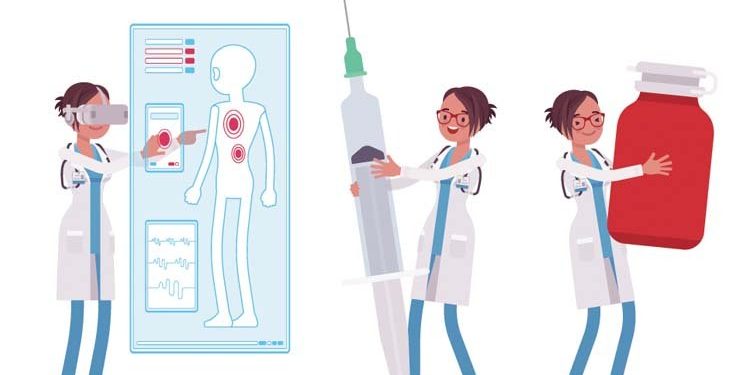If you’ve tried Virtual Reality before, you understand how immersive the experience is. I’ve joked in the past about how time perception is completely skewed when in the virtual world. Hours can go by and seem like minutes when a headset is on. It’s the perfection distraction from anything that’s going on in the real world.
With that in mind, this is one of the reasons why VR is making its way into the world of healthcare; specifically for use with chronic pain patients and as a distraction technique for painful procedures in lieu of painkillers. This can be especially helpful for children as an alternative to opioids. By putting patients in a virtual world, you are essentially de-hospitalizing them which will take them away from the environment, reducing mental pain and adding an ease of comfort.
Although the technology is still fairly new, studies have already proven that VR is a successful method in reducing anxiety and pain levels in patients receiving surgeries, needles, spinal taps and so on. Not only does this help on the patient side – reducing any side effects from pain medication and instead receiving a safe, entertainment-based approach to pain distraction – but also on the practitioner side. By reducing anxiety levels, doctors and nurses are able to conduct procedures much smoother and with more efficiency.
The research on Virtual Reality as a painkiller alternative has even gone deeper than distraction techniques for more simple procedures. Studies have even been conducted on burn patients with positive results. By putting the patients in an icy and cold virtual environment, they have reported 35–50% reductions in procedural pain. This is most likely due to people being able to tend their focus on visual stimuli from the virtual environment rather than the pain signals from the nerve system.
There is also the rehabilitation side. Studies are starting to be conducted for the use of Virtual Reality on post-stroke patients. Certain exercises that can be done in VR are showing promising results in speeding up the time it takes to increase mobility in both the upper and lower extremities of patients, especially in balance training. One of the issues with exercises that are currently being done on post-stroke patients is the amount of frustration they cause which results in lack of motivation. By incorporating these exercises in VR, the patients become more immersed and motivated to complete the exercised because of the challenging, ‘gaming’ style it can be tailored toward.
Aside from all the promising positive results VR can give to patients in hospital, there is also the factor of it being extremely cost-effective. Virtual Reality headsets are reusable, safe, hygienic (with proper care), and non-invasive. Headsets can be shared and assist hundred, if not thousands of patients over and over again.
I hope you found this article informative, and have come away with a better understanding of the many positive uses for Virtual Reality aside from the entertainment world. If you have any thoughts, we’d love to hear them in the comments below. And if you haven’t tried the technology out for yourself yet but are curious, feel free to schedule a free demo and tour of VRPlayin, and let us show you what VR has to offer!
References:
https://www.ncbi.nlm.nih.gov/pmc/articles/PMC4465767/
https://www.ncbi.nlm.nih.gov/pmc/articles/PMC4311594/







